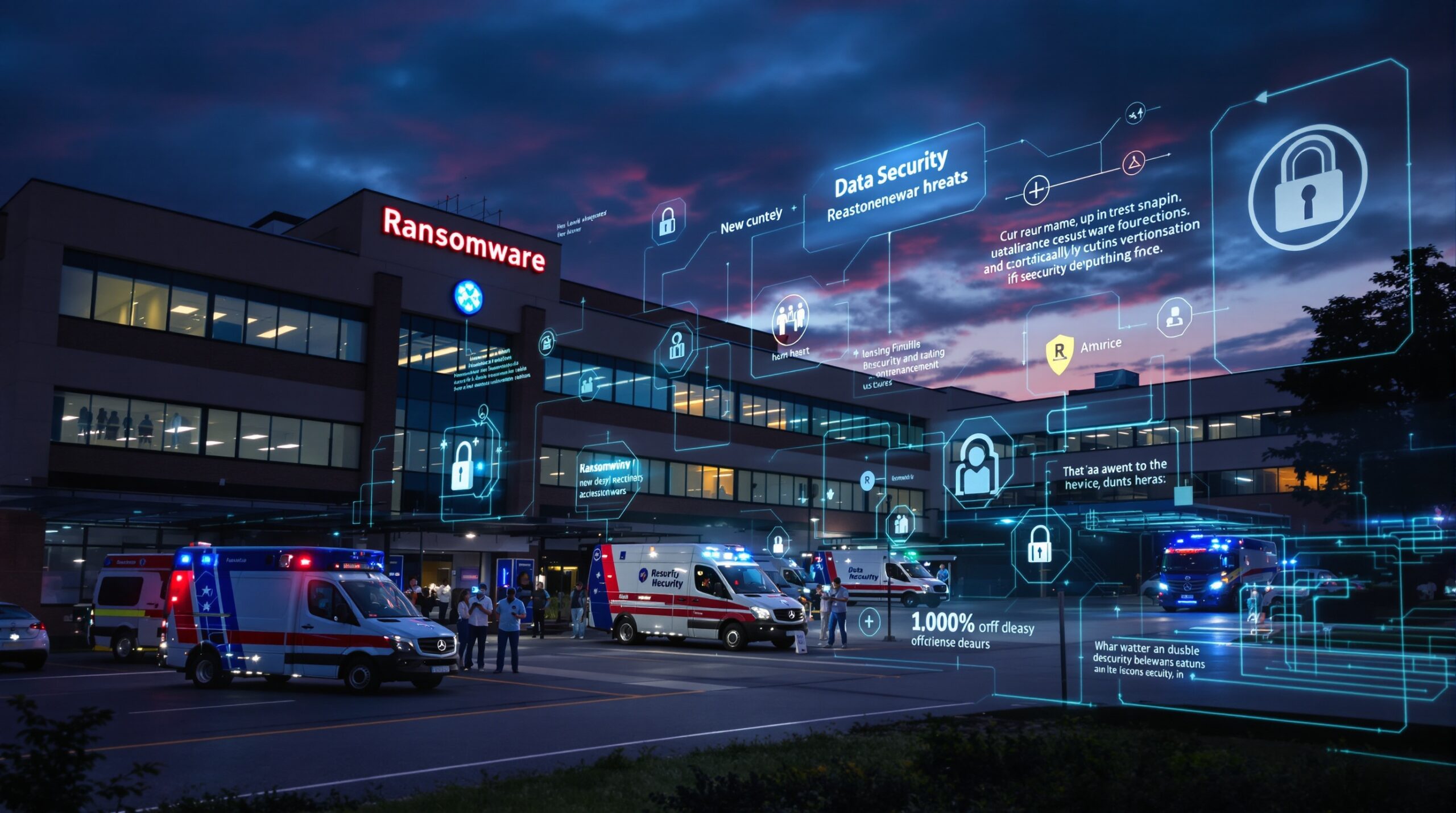Hospitals across the United States face an alarming rise in ransomware attacks. These cyber incidents are disrupting vital healthcare services, posing serious risks to patient care and safety. Federal agencies have responded with urgent calls for improved cybersecurity defenses within the healthcare sector. Hospitals must adapt rapidly or face even greater threats to their operations and patient well-being.
The Escalating Threat of Ransomware in Healthcare
Cybercriminals are increasingly targeting hospitals due to their reliance on technology and sensitive data. Ransomware attacks encrypt hospital files and demand payment for system access. These attacks often halt critical services, including emergency care, surgeries, and patient record management.
The surge in ransomware incidents reflects both increased sophistication among hackers and vulnerabilities in healthcare networks. Hospitals, often resource-strapped, may lag in cybersecurity investments. Attackers exploit weaknesses such as outdated software, inadequate staff training, and remote access points. As a result, the impact is severe and widespread.
Growing Consequences for Patient Care and Public Health
When ransomware disables hospital systems, the consequences go beyond inconvenience. Patient safety is directly compromised when test results and medical histories become inaccessible. Delays in critical procedures may lead to adverse outcomes or, in extreme cases, loss of life.
The Federal Bureau of Investigation (FBI) has reported cases where hospitals diverted emergency ambulances to other facilities. Medical staff sometimes revert to paper records, which slows care and increases the risk of errors. The healthcare system’s interconnectedness means these disruptions can ripple into neighboring hospitals and clinics.
Notable Recent Ransomware Incidents
Several high-profile hospital ransomware attacks have made national headlines. In May 2024, a multi-state hospital network experienced a coordinated attack, forcing temporary closures of emergency departments. Patients faced canceled appointments and delayed surgeries, while hospitals scrambled to restore systems and communicate with the public.
Other cases include the 2023 attack on a major medical center in the Midwest that exposed thousands of patient records. The hospital paid a ransom to regain access, but still faced reputational and financial damage. The incident highlighted the high stakes involved in these breaches.
Federal Agencies Step Up Guidance and Warnings
Recognizing the urgency, federal agencies have increased support and directives for hospitals. The Cybersecurity and Infrastructure Security Agency (CISA) often partners with the Department of Health and Human Services (HHS) and FBI to issue alerts about emerging cyber threats. These agencies provide practical recommendations for bolstering digital defenses.
Guidance includes regular software updates, stronger authentication protocols, and network segmentation. Agencies also advise hospitals to conduct frequent cybersecurity training and simulated phishing attacks to prepare staff. Collaboration with law enforcement can enhance incident response planning and recovery efforts.
Secure Practices and Proactive Preparedness Measures
Hospitals are urged to create robust incident response plans tailored to ransomware scenarios. These plans define roles, contain infected systems, and support quick data restoration. Agencies emphasize the importance of having offline backups and continuous network monitoring.
Multi-factor authentication and strict password policies further reduce the chance of unauthorized access. Medical facilities must restrict remote desktop access and monitor for unusual traffic or behavior. Regular vulnerability assessments can catch weaknesses before attackers exploit them.
Challenges Facing Hospitals in Cyber Defense
Despite support from federal agencies, many hospitals struggle with limited budgets and cybersecurity expertise. Smaller community hospitals are particularly vulnerable, as they may lack dedicated IT staff and up-to-date technology. The rapid adoption of connected devices and telehealth also expands the potential attack surface.
Legacy systems, which remain prevalent in healthcare, complicate software updates and security patches. Cybercriminals exploit these outdated platforms to gain system entry. Training staff at all levels remains a challenge, given the fast-evolving cyber threat landscape.
The Rising Cost of Ransomware Attacks
Financial losses from ransomware extend far beyond ransom payments. Hospitals face revenue losses due to disrupted operations and patient diversions. Recovery costs, legal liabilities, and regulatory penalties can significantly strain hospital budgets.
Data breaches often result in class-action lawsuits and damages to the hospital’s reputation. Insurance providers may raise premiums or limit coverage for future cyber incidents. Over time, patients may lose confidence in the security of their personal health data.
Industry-Wide Collaboration and Response
Industry associations urge greater collaboration among healthcare providers, security experts, and law enforcement. Sharing information about threats and attack patterns improves collective defenses. The Health Information Sharing and Analysis Center (H-ISAC) plays a key role in alerting members to emerging risks.
Joint exercises and tabletop drills help hospitals test their capacity to withstand cyberattacks. Federal agencies sometimes provide technical assistance during recovery efforts, ensuring lessons learned are communicated industry-wide. Strengthening partnerships can lead to shared best practices and increased resilience.
Innovations in Cybersecurity Technologies
Advanced cybersecurity technologies offer new hope for hospitals. Artificial intelligence and machine learning tools rapidly detect suspicious network activity and malicious software. Automation enables faster responses to ransomware threats and limits the chance of widespread infection.
Hospitals are investing in endpoint detection, real-time monitoring, and intrusion prevention systems. These technologies make it challenging for attackers to move laterally within networks. Encryption of sensitive data remains a vital last line of defense.
Looking Forward: Building a Stronger Cyber Defense
As ransomware attacks persist, hospitals must prioritize cybersecurity as a core business risk. Executives and boards should champion long-term investments in both technology and people. Federal agencies will likely continue issuing new standards and supporting the healthcare sector’s preparedness.
Transitioning from reactive to proactive cybersecurity culture can help prevent the devastating effects seen in recent incidents. Staff education, frequent system assessments, and information sharing will become standard practices for modern hospitals.
By embracing innovation and collaboration, hospitals can better protect their patients, data, and reputations. Cyberattacks will remain a significant challenge, but preparedness and resilience will make a decisive difference in safeguarding public health.

